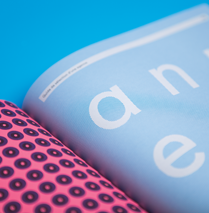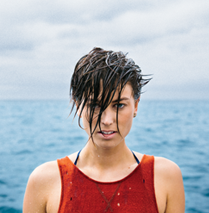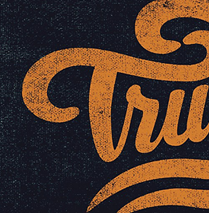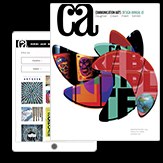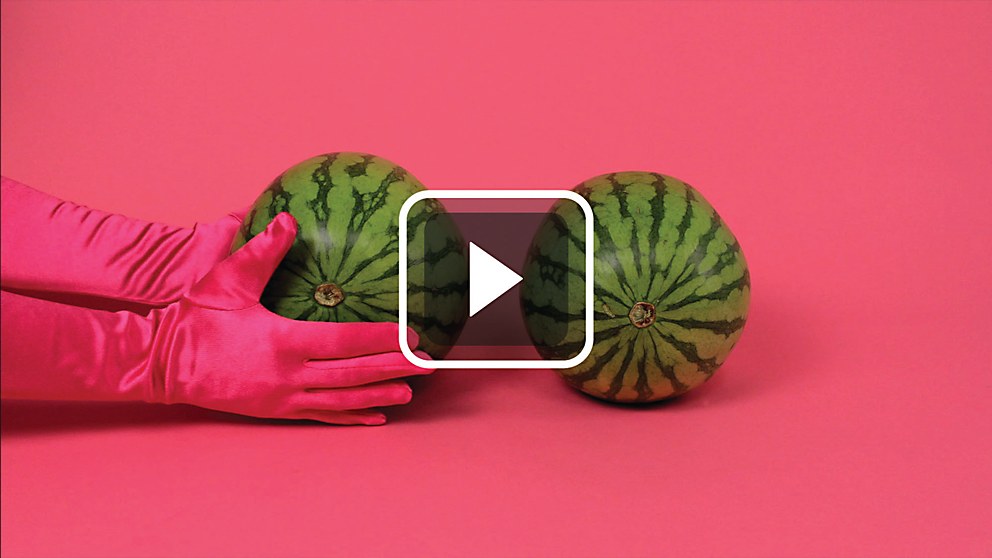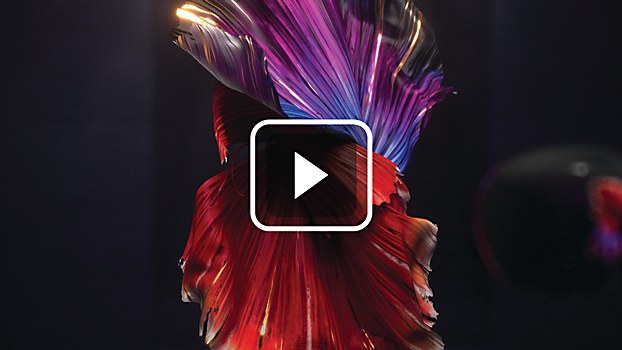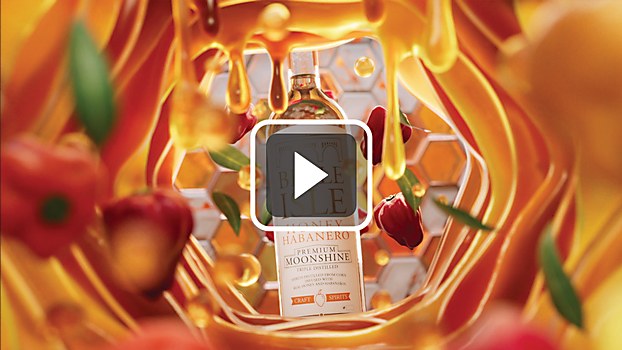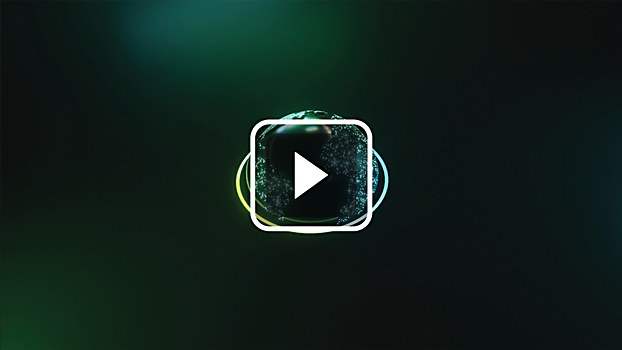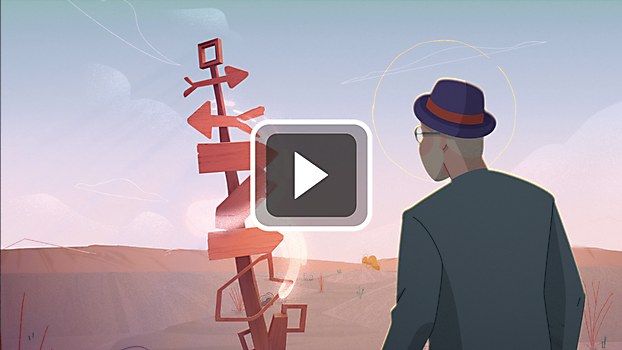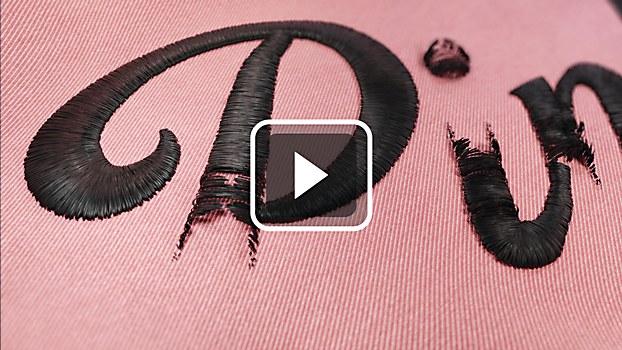Before Steven Spielberg takes the stage in Richmond, Virginia, he, along with the full-house audience there to hear him, watches a two-minute opener—a lush, mind-bending animated introduction that sets the tone for the Richmond Forum, the United States’s largest nonprofit speaker series where he’s a featured speaker. The 3-D photo-real animation is expansive, richly layered, luminous and dynamic—basically a distillation via imagery and artistry of the prestigious Forum itself. Spielberg is in good company—the Richmond Forum’s roster of past speakers reads like a litany of world leaders and celebrities: Isaac Asimov, Benazir Bhutto, George W. Bush, Jane Goodall, Mikhail Gorbachev, Barack Obama, Margaret Thatcher, Archbishop Desmond Tutu, Oprah Winfrey, and more recently, Anthony Fauci and Liz Cheney.
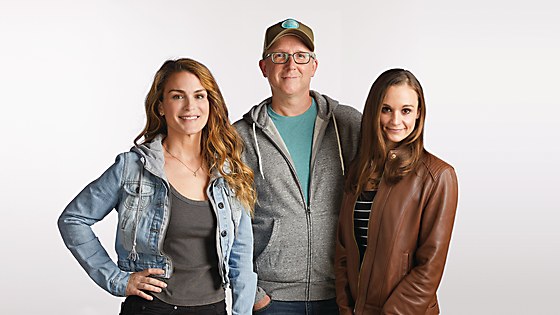
Amanda Russell, David Swain and Ruth Newberry Wilson.
“It’s pretty wild to have Spielberg there watching your work,” says creative director David Swain, a cofounder of Richmond-based Cream, the animation studio that has produced the Forum’s openers for the last fifteen years. “It’s one of our favorite projects,” says Swain, who created a few of the Forum spots solo before joining forces with creative directors Amanda Russell and Ruth Newberry Wilson to establish the studio.
“It’s a big deal, both locally and nationally. People are on the waiting list for years to get Forum tickets,” adds Russell. “It’s particularly meaningful to us because we live here. We put our all into it.”
Browse Projects
In the most recent spot, that “all” looks like jewel-colored betta fish that swimmingly collide and morph into luxuriously flowing fabric, which then blossoms into flowers, the pollen of which fairy dusts into Chinese lanterns—and that’s just for starters. One image transforms into another, just as ideas open minds and bold conversation congeals community. “We learn and grow by igniting curiosity and opening our minds to new and challenging ideas,” says the voiceover, as the visuals gorgeously ignite wonder and awe. The piece is poetry in motion, a dreamscape encapsulation of that intangible magic the Forum aims to achieve, “carving uncharted pathways in our understanding to discover universal connections that bond us together,” as the opener script describes it. And by carving similarly uncharted pathways via dazzling 3-D fluidity, Cream’s work for the Forum reflects a symbiotic pairing—each enhances the other, like cream in fresh-brewed coffee. Like strawberries and cream.
Which is exactly how the three cofounders and creative directors came up with the studio name. “Everything’s better with cream,” explains Swain. “It just makes things delicious. It might be the last thing you put on something or add in, but it levels up whatever it is, and that’s what we want our work to do.”
Plus, Russell adds, “Cream is rich and smooth, just like great animation.” Is your mouth watering yet?
In addition to the Richmond Forum, Cream has whipped up decadent smoothness and flavorful zip for brands including Anthem, Capital One, Disney, Eli Lilly, Paramount+, Target, Toyota and Walmart, which come to the studio for brand anthems, opening videos for large events (like the Richmond Forum), movie titles, and commercials for broadcast and web. “We’re lucky to have a strong national client base in addition to our local projects,” says Russell, who, like Swain, is a Virginia native. All three cofounders ended up staying in Richmond after each graduated from Virginia Commonwealth University, where they (in varied class years) studied graphic design. “In my day, it was called commercial art,” says Swain.
Newberry Wilson and Russell met after graduating while both were working at a graphics hub for television stations, and they met Swain virtually via Vimeo. “There were only a few animators working in Richmond a decade ago, and Dave’s name kept popping up,” recalls Russell. “We finally reached out and said, ‘Hey, we’re here, you’re here—let’s meet up.” At around the same time, Swain was looking for backup assistance with his increasingly full freelance docket, and the three began collaborating. Initially, their communication was all through email, iChat or text, but even so, their simpatico sensibilities were quickly evident. “It was so clear to me that we shared a commitment to the work and an ability to not take it or ourselves too seriously,” says Swain, who recalls their early emails and chat threads as “pretty ridiculous. We were all trying to be the funniest person in the room, so to speak. But that gave us a comfort with each other and allowed us to be ourselves, which in turn helped us push our creative boundaries.”
For Russell and Newberry Wilson, feeling respected and supported creatively was critical. “Dave is really good at what he does—his work ethic is amazing—but he also knows how to have fun,” says Russell. “He’s not one to talk over me or anyone else, and I respect that.”
The compatibility factor was so strong that the three began to discuss opening a studio together before they had even met in person. In 2013, the trio launched Cream in a beautiful space in the heart of Richmond’s Design District. For eight years before the pandemic hit, they collaborated in that shared space, bouncing concepts and ideas off each other, playing to each other’s strengths, and rounding out their team with a stable of freelancers. Russell, who studied fine art, tends to prefer projects heavy on illustration and 2-D. Newberry Wilson worked in theater design right after college, so she gravitates to all things 3-D. And Swain “is great at everything,” says Russell, but he often takes the lead on 2-D projects. He and Newberry Wilson both share a background in music while Russell was a dancer, so it’s no surprise that rhythm, pacing, meticulous choreography, and the seamless blending of sound and crisp visuals are signature ingredients in every Cream animation—part of what elicited Michelle Obama’s “Wow!” after she saw the Richmond Forum opener.
That sense of mutual respect, close collaboration and appreciating the creamy balance of each other’s talents continues in a work-remote pivot after the creatives opted not to reopen their brick-and-mortar studio post pandemic. When Paramount+ came to the studio for a fifteen-second teaser promoting Grease: Rise of the Pink Ladies, a prequel rom-com musical series about the girl gang at Grease’s Rydell High, Cream honed in on a pink denim jacket as a symbolic anchor—fashion as rebellion. “We immediately saw this as a 3-D treatment,” says Swain of the intricate animation that details the jacket’s creation, from hand-drawn patterns to fabric cutting to attaching buttons and cuffs, then finally, the needle piercing the denim to embroider “Pink Ladies,” threading a feisty, feminist identity.
This complex, hands-on process of jacket-making mirrors Cream’s similarly complex creative process, which, for this project, began with the team immersing themselves in ’50s-era fabric patterns and teen room decor. To execute the concept, Cream’s internal team worked alongside their trusted roster of illustrators and a Houdini specialist to realize their vision for flowy cloth simulations, realistic dynamics and convincing textures. “We love the results of our orchestrated team effort,” says Swain. Cream’s specialty, he adds, is finding the right solution for the specific project. “I know that’s the expectation, but artists sometimes can try to shoehorn what they want into a project and ignore what it needs to be.” And ultimately, he, Russell and Newberry Wilson all believe that what it needs to be is something that evokes emotion. “We’re really good at making things look cool or beautiful, but in the end, you have to make somebody care about it,” he says. “We want them to feel joy or curiosity or empathy. It’s that feeling we’re chasing all the time.”
Vulnerability, compassion and hope were the feelings they were chasing for a TV spot aimed at raising awareness for interstitial lung disease (ILD), a terminal disease that is tricky to diagnose. The animated spot promoted Lungs&You, a support resource for those with ILD. Cream centered its concept around a relatable character who initially appears despairing and confused, but as he walks along a path, a gentle breeze becomes his guiding companion, leading him toward strength and hope. The piece moves with swift ease as the bleak color palette turns more vivid and the landscape transforms. “In this one, as with every project, we have the same goal—to make it great, make it beautiful and make it authentic,” says Russell.
Cream’s recipe for doing that—its secret cream sauce, if you will—comes down to loving what it does and having fun. Newberry Wilson often makes a playlist for a project, using music as an entrée into that immersive creative zone. “We each value creativity and self-discovery as we all evolve as artists,” says Russell. “The three of us have influenced each other creatively, but we’re all still trying to figure out that thing we think we’re best at, and you can only do that through play.”
Much of the fun comes from working in the diverse range of styles that Cream is known for. “We try to keep things fresh and not do the same thing over and over again,” says Swain, who loves a good challenge. “Even if it’s something we’ve never done before, we’ll dig in and figure it out.”
Clients like the Richmond Forum keep coming back for extra Cream because they know this trio and their versatile team thrives on that imaginative, innovative pursuit. Their detailed storyboarding and review process ensures clients are on board as they develop the concept and animation. “It’s part of the trust we build with our clients,” says Newberry Wilson. “In turn, our favorite clients and most successful projects
are when they give us creative freedom and trust our instincts,” Russell adds.
Cream is one of those multitasking words, shapeshifting as either a noun, verb or adjective, and Cream likewise excels at working in varying styles with a diverse range of clients. In a world where generative art is increasingly prevalent, you won’t see the studio reaching for non-
dairy substitutes. “All bets are off with AI—there are just so many screens and so much content out there right now that being original and standing out is what it’s all about,” says Swain. “Our work will always have a tactile feel to it, a human touch.” ca



